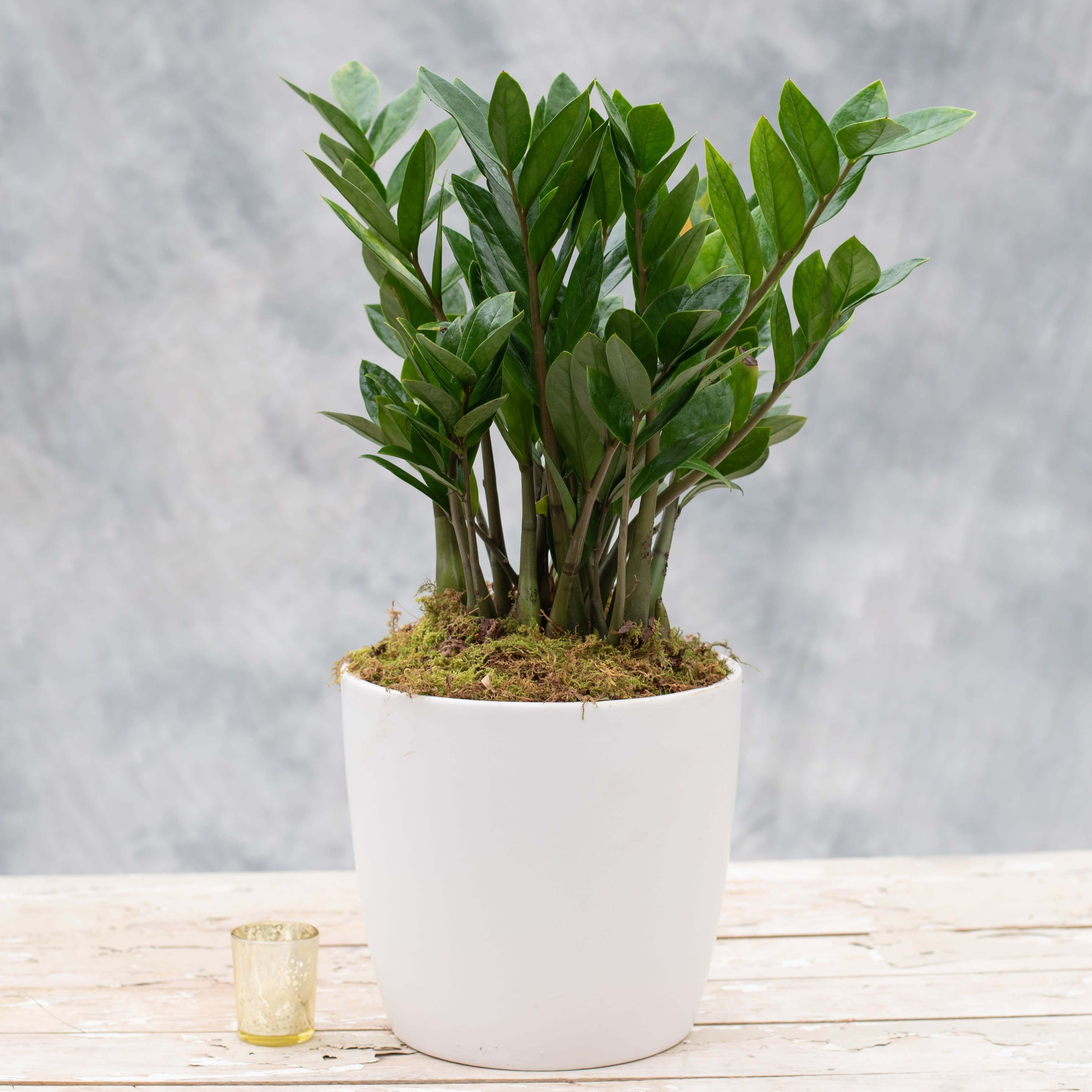When your ZZ plant starts to lean or fall over, it can be a sign of underlying issues. Understanding the causes and taking prompt corrective measures can help restore your plant’s health and stability. This guide will delve into the reasons behind ZZ plant falling over, provide effective solutions, and offer preventive techniques to keep your plant thriving.
Reasons for ZZ Plant Falling Over

The ZZ plant, known for its resilience, can occasionally succumb to the issue of falling over. Understanding the underlying causes is crucial to address this problem effectively.
Insufficient Light
ZZ plants thrive in bright, indirect light. Prolonged exposure to low light conditions can weaken the plant’s stems, making them susceptible to bending or falling over.
Overwatering
Excessive watering can lead to waterlogged soil, suffocating the plant’s roots and weakening its overall structure. Overwatered ZZ plants may exhibit yellowing leaves and wilting stems.
Underwatering
While ZZ plants are tolerant of drought, prolonged periods of underwatering can also cause the plant to wilt and lose its turgidity. This can result in the plant falling over due to lack of support.
Root Rot
Root rot, caused by fungal pathogens in waterlogged soil, can severely damage the plant’s root system. This damage compromises the plant’s ability to absorb water and nutrients, leading to wilting and eventually, falling over.
Corrective Measures for a Falling ZZ Plant

Recovering a falling ZZ plant requires addressing underlying issues that may have contributed to its instability. Implementing the following corrective measures can help restore its health and prevent further decline.
Adjusting Watering Frequency
ZZ plants are drought-tolerant and do not require frequent watering. Overwatering can lead to root rot, weakening the plant and causing it to fall over. Allow the soil to dry out completely between waterings. Check the soil moisture by inserting your finger about 2 inches deep. If the soil feels dry, it’s time to water. Adjust the watering schedule accordingly, ensuring the plant receives adequate moisture without becoming waterlogged.
Providing Adequate Light
ZZ plants prefer bright, indirect light but can tolerate low-light conditions. Insufficient light can weaken the plant, making it more susceptible to falling over. Provide the plant with access to bright, indirect light, such as near a north-facing window. Avoid placing the plant in direct sunlight, as this can scorch its leaves.
Repotting with Fresh Soil
If the ZZ plant has been in the same pot for an extended period, the soil may have become compacted or depleted of nutrients. Repotting the plant in fresh, well-draining soil can provide it with the necessary support and nutrients to recover. Use a potting mix specifically formulated for succulents or cacti. Ensure the pot has drainage holes to prevent waterlogging.
Treating Root Rot
Root rot is a fungal infection that can occur in overwatered plants. Symptoms include yellowing leaves, stunted growth, and a foul odor emanating from the soil. If root rot is suspected, remove the plant from its pot and inspect the roots. Healthy roots are white or cream-colored and firm. Diseased roots are dark brown or black and mushy. Trim away any diseased roots and repot the plant in fresh soil. Treat the plant with a fungicide to prevent further infection.
Prevention Techniques for ZZ Plant Stability: Zz Plant Falling Over
/zz-plant-pot-f34da789c4c14ef7a247ebafcff7e9c3.jpg)
To prevent a ZZ plant from toppling over in the future, proactive measures are essential. These include selecting an appropriate pot size, providing adequate support, and monitoring the plant’s well-being.
Regular pruning and fertilization play a crucial role in maintaining the plant’s vigor and stability. Pruning removes excess growth, encouraging a more compact and sturdy form. Fertilization provides essential nutrients that support healthy root development, enhancing the plant’s ability to anchor itself firmly in the soil.
Pot Size Selection
Choosing the right pot size is paramount for ZZ plant stability. A pot that is too large or too small can compromise the plant’s balance and increase the risk of falling over.
- For young ZZ plants, a 4- to 6-inch pot is suitable.
- As the plant matures, it may require a larger pot, typically 8 to 10 inches in diameter.
- The pot should have drainage holes to prevent waterlogging, which can weaken the roots and make the plant more susceptible to falling.
Support Techniques, Zz plant falling over
Providing proper support can significantly enhance the stability of a ZZ plant, especially for larger specimens.
- Staking: Inserting a stake into the soil and gently tying the plant to it provides support and prevents leaning.
- Trellising: Training the plant to grow on a trellis or support frame helps distribute its weight and prevent it from toppling over.
- Cage Support: Surrounding the plant with a wire or bamboo cage provides additional support and prevents damage from accidental knocks or bumps.
Monitoring and Maintenance
Regular monitoring and maintenance are essential for early detection of any issues that could lead to instability.
- Inspect the plant regularly: Check for signs of weakness, such as leaning or drooping stems.
- Adjust support as needed: As the plant grows, adjust the support to ensure it continues to provide adequate stability.
- Prune regularly: Remove any excess growth or dead leaves to maintain a compact and balanced shape.
- Fertilize according to the plant’s needs: Fertilization provides essential nutrients for healthy root development and overall plant vigor.